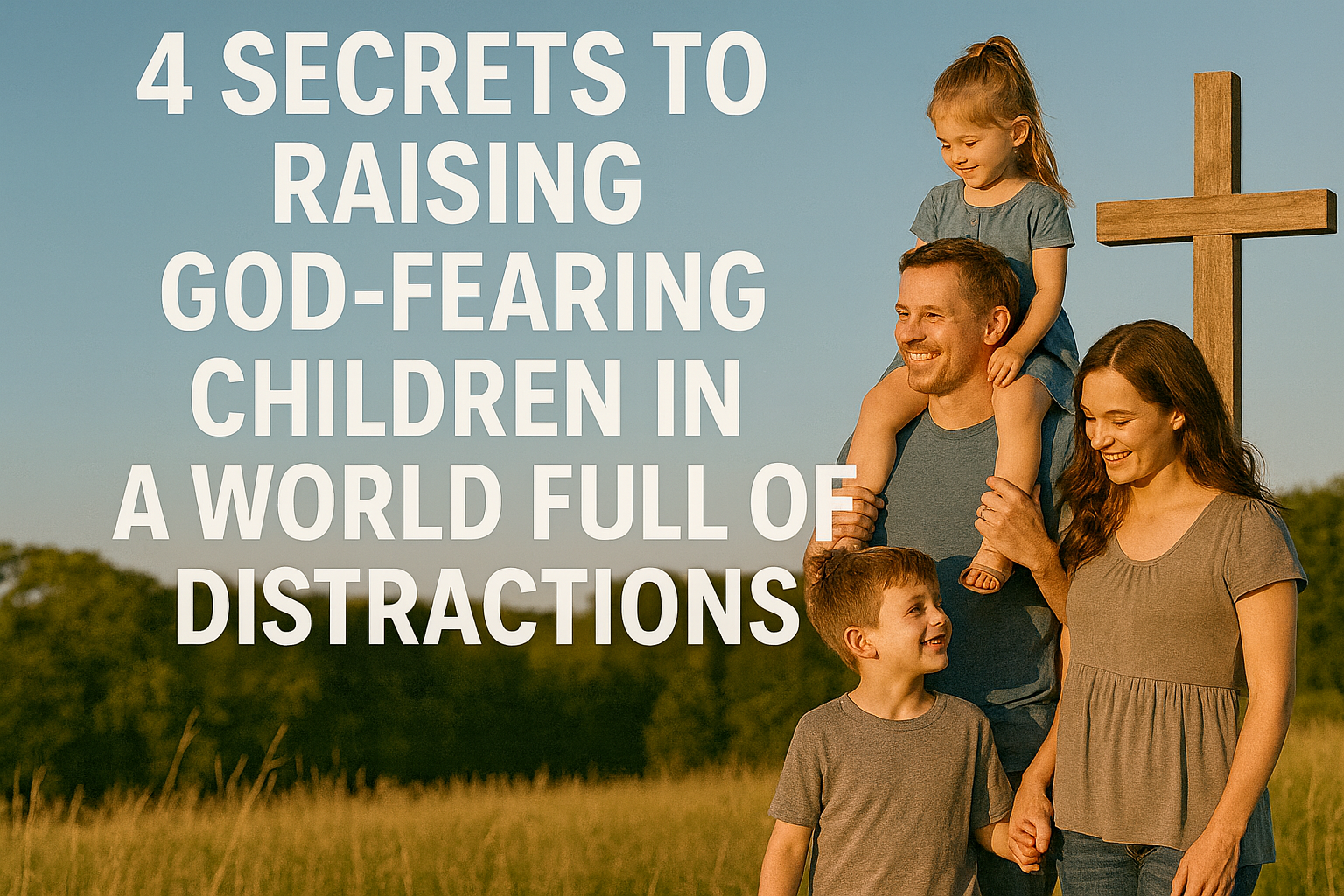Parenting has never been simple. But these days when smartphones buzz, TV screens glow, and algorithms compete for every ounce of attention it feels like the noise is everywhere.
So, what’s the secret? Actually, it’s not one but four. They’re not flashy tricks or “life hacks.” They’re timeless truths that, when practiced daily, help shape children who carry their faith with them long after they leave your home.
Let’s walk through them together.
1. Make Faith Visible at Home
Children are sharp observers. They catch the things you never thought they noticed the whispered prayer before you open a bill, the way you treat a waiter who messes up your order, the little sigh when you read Scripture in the morning.
If faith is only talked about but never seen, kids learn quickly that it’s just a Sunday routine. But if faith is woven into the fabric of home life, it becomes part of who they are.
What does this look like?
Reading a Psalm at the breakfast table even if it’s quick and messy.
Letting kids hear you pray not just in church, but in the car, while folding laundry, or when thanking God for small blessings.
Making family worship time non-negotiable but joyful songs, prayers, even laughter when the toddler shouts “Amen” too early.
It doesn’t have to be picture-perfect. In fact, kids remember the imperfect moments the most. Like the time Dad fumbled through a prayer because he was tired, or Mom laughed mid-verse because the cat jumped on the table. That’s life and faith belongs in real life.
You know what it’s like when athletes train? They don’t just play on game day. They practice, sweat, and build small habits every day. That’s what faith at home is like. The daily rhythm matters more than a big “event” once in a while.
2. Teach Them to Filter Distractions
Let’s be honest, kids today are bombarded. Between TikTok trends, YouTube marathons, endless gaming, and group chats that never sleep, it’s not just “noise” it’s a flood. And pretending distractions don’t exist isn’t realistic.
Instead, children need tools to filter what matters and what doesn’t.
Some practical ideas:
- Set tech boundaries. Not as punishment, but as freedom. Screen-free dinners, charging phones outside the bedroom at night, and family movie nights that replace solo scrolling.
- Create space for silence. Yes, even boredom has value. That’s when imagination grows, when kids pick up a book, or when prayers slip into the quiet.
- Talk about what they watch. Instead of a flat “No,” guide them: “What do you think that video was teaching? Does it line up with what God says?”
- Think about food. Just like junk food might taste good but makes the body sluggish, “mental junk” can make the soul heavy. Filtering distractions isn’t about cutting kids off from the world, it’s about training them to recognize what’s healthy and what’s harmful.
And here’s a secret: when you model it, turning off notifications during dinner, choosing Scripture over scrolling first thing in the morning they’ll follow.
3. Surround Them with Faithful Community
Parents play a huge role, but no parent can be everything. Children need other voices mentors, friends, leaders, grandparents that echo the same truth.
That’s where community comes in. A church family isn’t just a Sunday service; it’s a network of people walking the same road.
When kids see teenagers worshiping, when they serve alongside others, when they hear stories of faith from older members they realize they’re part of something bigger.
Think about it: how many of us still carry the faith of a grandmother’s prayers? Or remember a Sunday school teacher who cared enough to listen? Those moments stick because they’re woven into a web of relationships that reinforce faith.
It’s like building scaffolding. One pole won’t hold the weight. But when you connect several together, the structure stands tall. In the same way, surrounding children with godly influences helps their faith withstand the storms of peer pressure, doubt, and distraction.
Practical tip? Invite their friends over. Get to know the parents. Encourage inter-generational friendships. Sometimes the most powerful role models aren’t who you expect.
4. Model Repentance and Humility
Here’s a truth that’s a little uncomfortable: your kids don’t need you to be perfect. They need you to be real.
When you mess up and you will what matters most is what you do next. Do you cover it up? Pretend it didn’t happen? Or do you kneel down, look your child in the eye, and say, “I’m sorry. I was wrong”?
That moment teaches more about grace than a thousand lectures.
Think of a father who loses his temper after a long day. If he brushes it off, the child learns anger is excusable. But if he apologizes genuinely it shows humility. It shows that faith isn’t about pretending, but about repenting.
Kids also need to see parents leaning on God, not just demanding obedience. That means letting them see your struggles without overwhelming them.
Final Thought
Raising God-fearing kids is a marathon, not a sprint. But you’re not running alone. God is with you, guiding every step, even when the road feels uphill. Stay steady, stay joyful, and keep planting seeds. The harvest will come.
Hidden Blessings God Promised for Families Who Live by This Ancient Command
